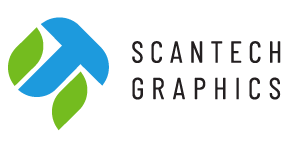Digital Textile Printing: Reinventing Interior Décor Possibilities
The $165 billion worldwide decorative textile market is primed for the taking. FESPA and industry consultancy InfoTrends, among others, identify the textile décor market as the wide-format industry’s most exciting growth application.
In this age of the selfie, digital printing delivers the customized and personalized décor today’s consumer demands. It also satisfies the need for instant gratification; digital can turn out it quickly.
“The digital printing industry is at the tipping point where productivity, running costs, and the range of substrates and solutions have expanded so much that digital printing economics are more attractive than they were a few years ago,” noted Asaf Lavi, décor business segment manager, Wide Format Digital Printing Solutions, USA, HP.
Just five years ago, the cost of digital textile printing was 5x the cost of conventional textile printing, with impractical comparable output, said Patrick Clark, president of Nextwave, integrator for EFI Reggiani printers for North America and Central America.
“Also, the output was limited to short run high cost items representing less than one percent of all decorated textiles. Today, with the net costs comparable and the throughput practical, industry analysts predict 40 percent of all decorated textiles will be printed digitally,” Clark added.
Rotary screen printing still holds the largest share, at 60 percent of the market, according to NetWave’s own analysis. This is followed by automatic flat screen at 28 percent. Copper roller printing, hand printing, and transfer printing hold small percentages; digital textile printing represents less than one percent of the market.
Retail in general is evolving; the consumer wants more control of the shopping experience, said Clark. And it’s not only with their clothing items that consumers desire this control, but interior décor as well.
“Driven by the benefits that digital printing brings (i.e., short runs, personalization) and the advances in both inkjet image quality and specialty media, there is an undeniable good ‘fit’ to marry the technology with corporate and consumer end users looking to have a unique look to their store, office, or home,” said Randy Paar, manager, marketing – Display Graphics, Large Format Solutions, Canon Solutions America.
Digital textile printing technology allows for short run production verses the traditional printing process more suited for mass production. It allows companies to print on demand, delivering what is needed when it’s needed and reducing costly inventories.
Overall advancements in both printing technology and software – as well as an increase in specialty application fabrics—have made it easier to produce custom, short-run textile pieces for indoor environments, said Ken VanHorn, director, marketing and business development, Mimaki USA.
Digital printing also opens up the design possibilities, as there are no longer any restrictions on scale or the number of colors, said Lavi.
“Digital printing pushes design boundaries and fosters creativity, reinventing interior décor possibilities,” he added. “Historically, the design industry has only considered analog printing technology for design projects, but in the last few years designers have discovered and embraced the limitless possibilities with digital printing. They are requesting more unique designs that they would not have considered in the past.”
The décor market, said Clark, is following what happened in the apparel market. As market moves to just in time production, retailers that have traditionally bought millions of yards offshore, can now do shorter runs in the tens of thousands. The upshot? As in the apparel market, production will move production back to the US.
“The interior décor market is growing, and we see an increasing number of applications that are addressable with HP Latex printing technology, which has contributed to its fast growth,” said Lavi. The two fastest growing segments are wallcoverings and canvas, but we are also seeing accelerated growth in the window blinds market. There are additional growing markets for wall decals, upholstery, high-pressure laminate, lamp shades, and others.
Wall coverings, wallpaper, wall art, flooring and mats, curtains, upholstery, duvets, sheets, drapes, throw pillows, upholstery, shower curtains, carpet, mats, furniture, and automotive are all items that can be produced digitally. Environmental graphics for office lobbies, medical (doctor, dentist, therapist) treatment areas, hotel rooms, etc., are desirable because of their softer feel that imparts a feeling of hominess.
Scantech Graphics, located in the Kearny Mesa neighborhood of San Diego, is proud to offer HP Latex technology and the Wall Art Designer tool for their clients.
